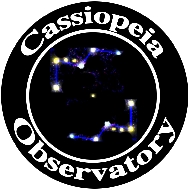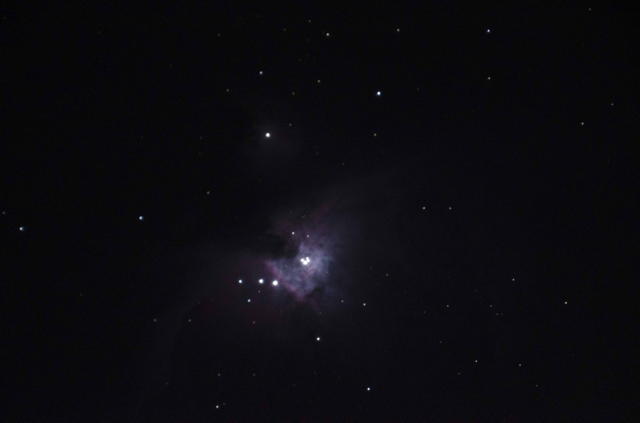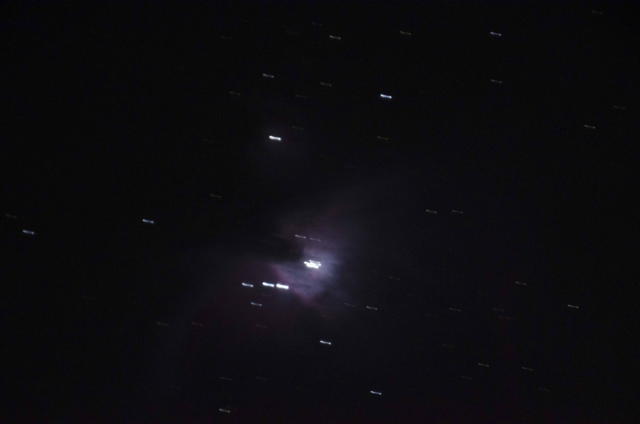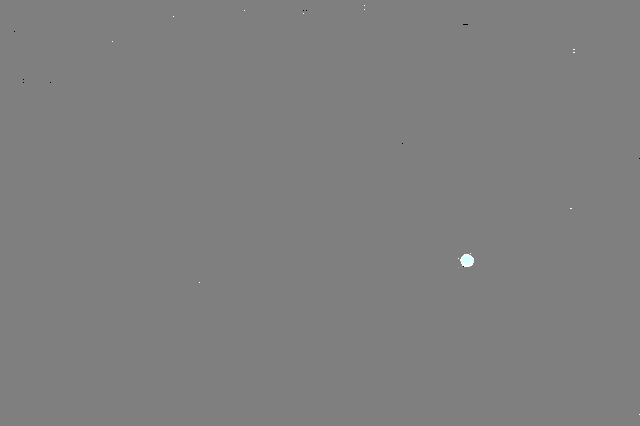
ASTROPHOTOGRAPHY - TIPS
Last updated: 31 December 2011
This page documents astrophotography comments, tips, and photos. Contributions welcome. Be certain to see the other articles on the main Astrophotography page.
Subject: Meade etx-70at and Canon EOS 500D Sent: Friday, December 30, 2011 01:32:48 From: Christian R. Larsen (crlarsen@gmail.com) I have the above stated equipment and have bought a Canon T adaptor and an Astro T2 1,25" adaptor. This means that I'm only able to connect the camera through he eyepiece holder. Should I be able to get this to work or is there anything else I would need to take pictures o the moon etc? Happ new year from Christian Larsen Copenhagen, DenmarkMike here: For the ETX-70, that will actually work best. The telescope will act like a 350mm telephoto lens (without an eyepiece) and that mounting position will provide the most stability. If you want more magnification, add a Barlow Lens.
Subject: Any info on astrolocker products Sent: Monday, December 26, 2011 14:33:53 From: Mike Manning (manning_mike@yahoo.com) i found a site called astrolocker that offers deva cameras - I am looking to use with my etx-90ec. Prices appear reasonable, but I cannot find any other information on them. Do you have any info or knowledge of this product? Http://www.astrolocker.com Regards, Mike Manning Sent from my iPadMike here: Sorry, I've heard nothing about them or their product.
And:
Thanks, if I purchase it, I will forward a review.
Subject: Filters for DSLR Prime focus astrophotography. Sent: Sunday, December 25, 2011 05:44:46 From: Jim Beston (james_beston@sky.com) May I take this opportunity to wish You and Yours a Merry Christmas and a Happy, Healthy and Prosperous New Year. As a newbie in DSLR astrophotography, when using the camera body (A Nikon D5100) coupled directly to the telescope in prime focus photography, is there a way to fit filters in the light path? I am thinking particularly of a light pollution filter or a moon filter. I have some filters that would screw into a 1.25" eyepiece and others which would screw into the front of the DSLR lens. Thanks JimMike here: Depends on the prime focus adapter you have. The OPT Camera Adapter allows 1.25" filters to be attached on the adapter.
Subject: Using the ETX-125EC in Polar Alignment with a DSLR on the Photo Port Sent: Monday, December 19, 2011 11:48:54 From: Arthur C Widener (awidener@sbcglobal.net) Using the ETX-125EC in Polar Alignment with a DSLR on the Photo Port (Rear Cell) doing Astrophotography, will the Drive Base interfere with the DSLR? If so, what tips do you have to stop it from hitting the Drive Base? Thanks, ArtMike here: In some orientations at some latitudes with some DSLRs using some types of adapters the answer will be "yes". I suggest you try it out indoors before going outside in the dark. As an alternative, mount the camera at the top eyepiece port using a 1.25" adapter for your camera. I use the OPT Camera Adapter.
And:
The top eyepiece port solution looks good, thanks. This may be the route I'll take. My DSLR sensor size is 36mm x 24mm. It looks like the 1.25 inch adapter may limit the image reaching the sensor somewhat. Is this an issue? Thanks, ArtMike here: You may get some vignetting but it won't be an issue for most objects. And mounting the camera at the top port will reduce the need for a counterweight.
And:
Thank you Mike. I was doing a "Live on line Help (Chat)" with OPT, and Vincent Giordano said "The only concern would be focus position You are correct in that you only need two adapters to connect your camera but you might be placed further then what the telescope will allow for focusing. what you could then do would be to unthread the nosepiece off the camera adapter as it's T-threads as well and then thread that directly to the T-ring and try to reach focus at that point. you don't get to use the camera adapter at that point with a lens but you will reach focus." Have you notice this with a full frame camera such as the Canon 5D? Thanks again, ArtMike here: I have used the adapter minus the eyepiece projection adapter portion with my D70 and D7000 DSLRs on the ETX without problems. They are not full frame cameras but the vignetting you might see won't affect most objects you might photograph.
Subject: Question - Tracking issue, RA, Etx 125 Sent: Thursday, December 8, 2011 07:50:16 From: Challenger, Ben (Dubai) (Ben.Challenger@sgs.com) Hope the skies are treating you well. I have an issue taking exposures longer than 15 seconds. When tracking an object such as orions nebula and I take an exposure of say 15 seconds it comes out perfectly sharp. Then when I take another photo a few seconds later without touching the telescope it seems from the print that the mount tracks perfectly for 10 seconds or so then I get a streak from the motor slewing suddenly on the ra xis. Its taking me 15 shots at 15 seconds to get one without the motor doing this... I have a brand new etx with a d7000 on the photo port set up in polar mode. I am wondering if it is not enough lube on the ra gear and so is sticking a little every now and again or maybe the weight of the camera causing issues? Any suggestions? BenMike here: Well, several probabilities. First, the ETX mount is not designed for astrophotography. So, precise tracking for long duration astrophotography should not be expected. Second, accuracy of the alignment, both AutoStar and polar alignment, will affect tracking. Third, the ETX needs to be polar mounted for best results and to avoid "field rotation". Fourth, the telescope should be in balance with the camera attached. (do you have a counterweight attached?). Fifth, the weight of camera can affect how well the friction axis locks will hold.
And:
Thanks mike. The alignment in polar is pretty good-most objects come into the center of the eye piece pretty quickly. The friction clutches seem to hold well and I don't have much play however this issue seems worse when doing stuff near the horizon than the zenith so it could very well be the camera weight as I don't have a counter balance. I'll add a bit of extra lube to the gear cog teeth for the ra drive anyhow and see if a counter balance helps. As I said sometimes it tracks great allowing me great exposures but every 10-15 seconds or so it'll move a small amount suddenly causing a little trailing that is faint and if I get my exposure in that "gap" between those sudden small movements, its sharp and trail free. Cheers BenMike here: The problem is likely just slippage in the friction locks. As long as the trailing is smooth, there is probably not a gear problem.
And:
Attached is an example of what I am experiencing. 61.jpeg and 62.jpeg were identical exposures taken 15 seconds apart, each exposure being 15 seconds. Camera is controlled remotely by usb and the motors nor telescope were not touched. Both shots were taken in mirror up mode first to stop camera vibration. 61 is nicely tracked and looks good, but 62 has slewing trails. Does this look like friction gearing slipped due to camera weight? Thanks for your time, Benjamin Challenger


And:
OK Thanks!
Subject: Question - What Barlow lens for ETX 125 AT Prime Focus AstroPhotography with D7000? Sent: Sunday, December 4, 2011 10:38:57 From: Challenger, Ben (Dubai) (Ben.Challenger@sgs.com) I have recently purchased a ETX 125 AT and am in the process of getting to grips with astrophotography using prime focus., and have already produced some decent orion nebula images. However for planetary viewing, I would like to use a barlow lens in conjunction with the Meade #64 T Adapter and a Nikon D7000 with standard T-ring for #64T-Adapter, on the photo port; But I cannot figure out what Barlow lens would be compatible and if I would need an adapter due to the different sizes of ports? Please can you give me some suggestions? Kind Regards, Benjamin ChallengerMike here: I would suggest using the eyepiece port instead of the rear port. Better weight balance. The ETX needs a "shorty" style Barlow Lens. The Meade #126 2X Barlow Lens is designed for the ETX. Others can also work; see the Accessory Reviews: Eyepieces page. I like the OPT Camera Adapter; see the Accessory Reviews: Astrophotography page.
And:
What are the recommended settings for using the d7000 in video mode for planetary viewing. Would it be better at 640x424 or 1080p? I know the Canon cameras allow a native 1:1 640x480 middle part of the sensor to be used but am unsure if Nikon do the same.Mike here: With my D7000 DSLR, I tried the smaller resolutions but found that the objects tended to overexpose. So, I've stuck with the max. Of course, a lot of trial-n-error might find the sweetspot for exposure.
And:
Thanks for the reply and great site! Have a great evening.
Subject: Re: DSLR Astrophotography Sent: Sunday, November 20, 2011 10:22:11 From: Jim Beston (james_beston@sky.com) I took your recent advice and have purchased a Nikon D5100. It will be a little while before try Astrophotography with it as I would like to get up to speed with its functions in general photography first, but I have been "bowled over" by the photos it has produced so far. It is a superb camera! I would like to thank you very much for recommending it to me. I look forward to sending you some nice photos in due course. Thanks again Jim
Subject: DSLR Astrophotography Sent: Saturday, November 12, 2011 05:03:43 From: Jim Beston (james_beston@sky.com) Having done lots of astrophotography with the Meade LPI and DSI II cameras, I now want to try doing some DSLR astrophotography. At this stage I don't want to go overboard and spend a vast amount of money and it appears that the Canon 1100d might be a good camera to start with. However, I am a little concerned to read that DSLR cameras, if used for astrophotography, should be modified by the removal of certain filters that are contained inside the camera. As I would also wish to use the camera for normal photography, I do not wish to do this. Do you think that I will be able to get good images without modifying the camera? I have both an ETX 105 and an LX200 GPS, 10" and I would seek to use the camera with both of these either piggybacked or fixed at prime focus. My main objective is to get fairly detailed images, of a wider field of view, than I can achieve with the Meade Cameras. Thanks & Kindest Regards JimMike here: I use a Nikon D7000 DSLR unmodified for astrophotography as well as for general photography. You can see my results on the Photos page on my Cassiopeia Observatory web site. Today's DSLR models have some amazing high ISO capabilities. I use a Nikon wireless remote for flipping the mirror up and then opening and closing the shutter. Whatever DSLR camera you get, be certain it has a "Bulb" setting. Also, a video recording capability can be useful on brighter objects if you want to try stacking frames.
And:
Thanks for your reply, Mike. The D7000 looks good but a bit expensive. At this stage, I wonder if the D3100 on the basis of cost and function, would be a good start-point. It has video and the "bulb" setting so I am hoping it might be ok. Thanks again JimMike here: The D5100 looks good too.
And:
It does, doesn't it? A bit more expensive than the D3100 but improved features and I like the tilt out screen. I think I'll go for it! Thanks for steering me in the right direction, Mike. JimMike here: Just like there are Meade and Celestron camps, there are Nikon and Canon camps. Both have excellent products. I just happen to be in the Meade and Nikon camps.
Subject: etx-70 and opt camera adapter Sent: Wednesday, November 2, 2011 20:22:19 From: Anonymous First off thanks for keeping up this website. I just bought a t-ring and a Celestron 93625 Universal 1.25-inch Camera T-Adapter and realized that there's no way I can get my Canon t2i to focus. Putting a 3x barlow made things clearly but it was still very blurry. Would this shorter OPT camera adapter work? What other alternatives do I have if I want to take prime focus photos through the eyepiece? Thanks,Mike here: I'm not familiar with the Celestron adapter. But I have used the OPT Camera Adapter set with my ETX telescopes and D70 and D7000 DSLRs. See my review on the Accessory Reviews: Astrophotography page. As to other solutions, some are reviewed on that page as well.
Subject: Re: ETX 125 photo question Sent: Tuesday, October 25, 2011 22:00:56 From: Frank Jackowiak (frank@itpphoto.com) Great point Mike, Thanks again, Frank On Mon, Oct 24, 2011 at 12:21 AM, Michael Weasner wrote: Sometimes the eye outperforms the camera. The brain is just too smart. In-camera imaging software has some catching up to do.
Subject: Lytro camera for Astrophotography Sent: Monday, October 24, 2011 12:34:47 From: User721401@aol.com I am not sure if you have heard about this new (technology) camera coming out by Lytro. It is a light field camera which gathers light first and you focus later. I am being sent one to mess around with. I am wondering what your thoughts would be for using this in astrophotography. Other then obvious square peg in a round hole issue, I think it may have potential to ease the focus challenge in astrophotography. The website is www.lytro.com. I am not sure when the camera will arrive, I am guessing early next year. I have not gotten one sooner since I am a windows operator and right now the camera supports Mac. Thank you for your time. DanMike here: I look forward to your test results. The obvious question will be how well it handles low light conditions. It should be OK on bright objects like the moon.
Subject: ETX 125 photo question Sent: Friday, October 21, 2011 22:42:07 From: Frank Jackowiak (frank@itpphoto.com) Maybe you can help with a photography question using an ETX 125. I am new to astrophotography but not new to photography. I am stumped by my results, I attached a photo, that is Jupiter in the lower right hand corner. I live in Plainfield Illinois, about 30 miles SW of Chicago. I have an Nikon D700, ETX 125 reworked by the Doctor, and a Meade 64 adapter. I can get to see a great view of Jupiter in the eye piece (Meade super plossl LP 26mm) and right now I'm not using the Autostar, just lining it up manually. I focus the ETX and like I said I get a great view and see the Moons, when I switch to the camera I have to refocus the ETX and the image is much smaller. I use the self timer to take the photograph and there is the result I attached. I Internet searched and found info on stacking images and other adapters instead of the Meade 64 but nothing that has helped. I did read on your sight that you use the eyepiece, so I can try that after I get an adapter. I guess what has me puzzled is why if I'm using the ETX as my lens I can't get a sharper image and see the moons. Any suggestions would be appreciated, and by the way, thanks for a great site. Thanks, Frank


And:
THANKS for the information. Yes I just took the photo the night I sent the email. Like I mentioned, and I guess it's the photographer in me, not being able to get a photo of what I see in the eye piece is what bugged me the most. I am going to try and get an adapter for the eye piece and try that. Thanks & take care, FrankMike here: Sometimes the eye outperforms the camera. The brain is just too smart. In-camera imaging software has some catching up to do.
Subject: Meade ETX and Canon 450 DSLR and F6.3 Focal Reducer Adapters Sent: Wednesday, October 12, 2011 02:12:47 From: Bob Gunnis (bobgunnis@ntlworld.com) ETX 125AT and Canon 450D EOS DSLR Camera I wonder if you can help me with this problem. I have a Meade ETX 125AT Telescope and a Canon 450D EOS DSLR. Because of the focal length of the ETX, I have got a Meade Series 4000 F6.3 Focal Reducer/Field Flattener and now I need to know what adapters I need to be able to connect them all together for Astro Photography. I have already purchased the Meade #64 T-adaptor and the Canon T mount previously and these fit perfectly well and I can attach the camera without the focal reducer and take Astro photographs. Please advise me what other adapters I require and if possible, the size of the thread on the photo port where the #64 normally fits to at the rear of the scope. Many Thanks Bob GunnisMike here: The Meade focal reducer is for Schmidt-Cassegrain telescopes (SCT). So you need a SCT adapter for the ETX. Shutan used to sell an adapter but they are no longer in business. Alternatively, you can get a focal reducer designed for the ETX. There are some discussed on the Accessory Reviews: Astrophotography page.
Subject: Noob looking for advice Sent: Thursday, October 6, 2011 10:31:06 From: Sal Chiarelli (salchiarelli@gmail.com) I am a photography enthusiast looking to expand my hobby to astrophotography and I am in desperate need of advice if you don't mind. I have a Nikon D5000 and am interested in purchasing a telescope, but there are so many to choose from! I am browsing craigslist for a second hand one, is this a bad idea? I found a Meade ETX-90, an Orion Skyview Pro 127mm, Meade Model 4500, Meade ETX 60, Orion SkyQuest XT8, & Meade ETX-70AT. Here are my search results, so you can see the prices: http://newyork.craigslist.org/search/?areaID=3&subAreaID=&query=telescope&catAbb=sss. Originally, my limit was around 200 bucks, but if something is worth it, Ill spend a little more. I hope you have a few minutes to help me out, I dont know anyone into this hobby to ask for advice. Thank you, SalMike here: You can do some types of astrophotography with almost any telescope and camera. For more info, see the article "Astrophotography Types" on the Helpful Information: Astrophotography page. That said, you do need a stable mount and ideally a remote shutter release for your camera (although a self-timer can work for some types of imaging). Depending on what types of astrophotography and how serious you think you might be, the larger the aperture the better. For more on astrophotography, see the Helpful Information: Astrophotography page; lots of useful tips there. As to buying a used telescope, many times that works out fine. But as with any precision instrument, you do run a risk of getting something that is "not quite right" and then can spend a lot of time and money making it right. I recommend purchasing from a reliable dealer, local if you have one, otherwise from a dedicated online telescope dealer with relationships with the manufacturers.
Go to the July-September 2011 Astrophotography - Tips page.
Go to the January-June 2011 Astrophotography - Tips page.
Go to the April-November 2010 Astrophotography - Tips page.
Go to the January-March 2010 Astrophotography - Tips page.
Go to the April-December 2009 Astrophotography - Tips page.
Go to the January-March 2009 Astrophotography - Tips page.
Go to the May-December 2008 Astrophotography - Tips page.
Go to the February-April 2008 Astrophotography - Tips page.
Go to the July-December 2007 Astrophotography - Tips page.
Go to the January-June 2007 Astrophotography - Tips page.
Go to the October-December 2006 Astrophotography - Tips page.
Go to the July-September 2006 Astrophotography - Tips page.
Go to the April-June 2006 Astrophotography - Tips page.
Go to the January-March 2006 Astrophotography - Tips page.
Go to the November-December 2005 Astrophotography - Tips page.
Go to the September-October 2005 Astrophotography - Tips page.
Go to the July-August 2005 Astrophotography - Tips page.
Go to the May-June 2005 Astrophotography - Tips page.
Go to the March-April 2005 Astrophotography - Tips page.
Go to the January-February 2005 Astrophotography - Tips page.
Go to the October-December 2004 Astrophotography - Tips page.
Go to the July-September 2004 Astrophotography - Tips page.
Go to the April-June 2004 Astrophotography - Tips page.
Go to the January-March 2004 Astrophotography - Tips page.
Go to the 2003 Astrophotography - Tips page.
Go back to the Astrophotography Page.
Go to the ETX Home Page.